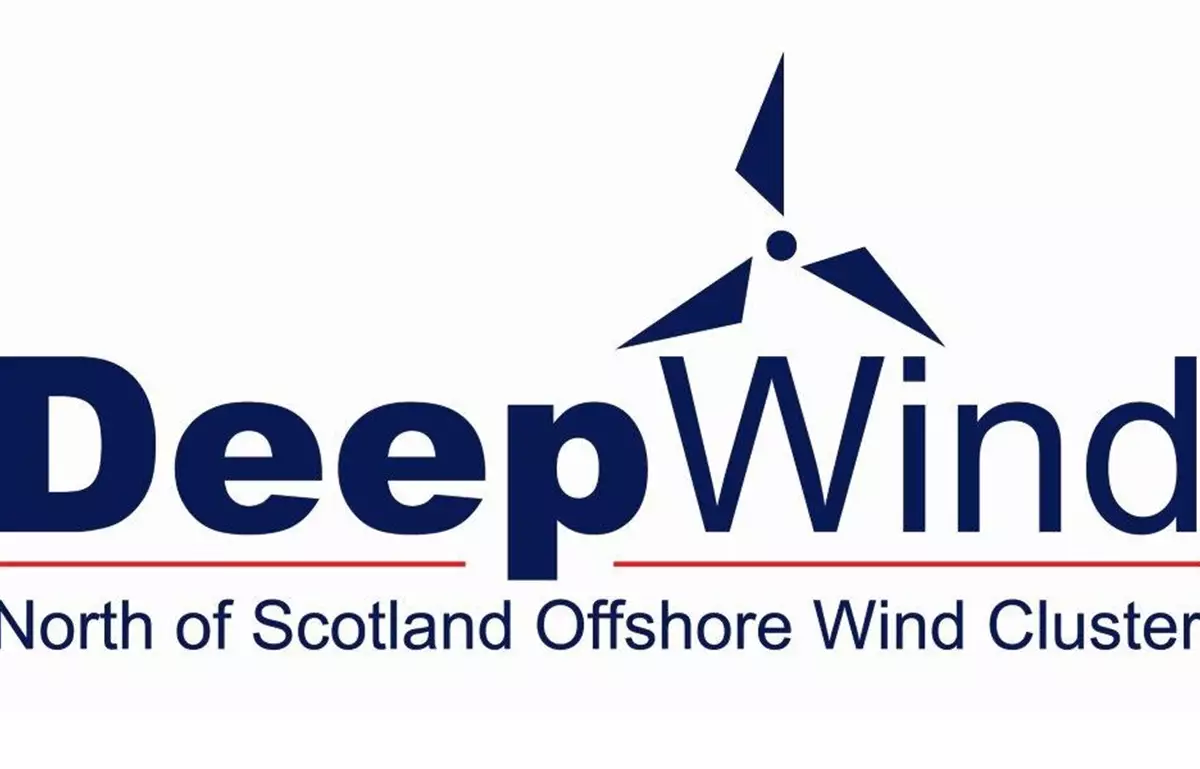Published on 23 May, 2023
Published in News
With the 15.5GW Scotwind, recent 5.5GW INTOG round and the upcoming 4GW Celtic Sea leasing round combining with a few pilot, and test & demonstrate projects, there is now a 25GW pipeline of potential floating offshore wind (FLOW) projects across the UK. In physical terms this equates to around 1,500 floating units, each likely to be around 8,500Te each and typical dimensions of H105m x W85m. If you can visualize a floating Eiffel Tower and two VLCC tankers side-by-side, then you can appreciate the scale of a single FLOW unit.
Scale matters as bigger units with bigger turbines equals more power output. On the flip side, delivering #60 or #70 FLOW units for a single 1GW project, and doing this within a 2yr installation window, has some real practical issues. For context, the largest UK FLOW project to date has been #5 smaller units and in overall scale, 1,500 units is about the same tonnage as the entire UK shipping fleet operating today.
Whilst the practical challenges in growth and scale are legion, the following two examples illustrate solutions that are enabling delivery on the promise and potential of floating offshore wind.
Temporary offshore ‘wet’ storage
Bringing together all the supporting vessels, supply components and activities to install a 1GW FLOW project in two seasons is a major undertaking. Key to this schedule is having your floating units built and marshalled, ready to integrate with their towers, turbines, and blades and then ready to be installed.
But with most ports and facilities only able to handle 2-3 units at a time (remember the physical dimensions), where do you ‘park’ or store your other units? What do you do if you have supply or delivery delays, or the weather conditions slow you down?
Without answering these simple questions, you cannot deliver a robust integration and installation plan. Offshore Solutions Group identified this issue in late 2021 and, partnering with HR Wallingford, set out in 2022 to answer these questions through the Temporary Storage Floating Wind Joint Industry Project (TS-FLOW© JIP).
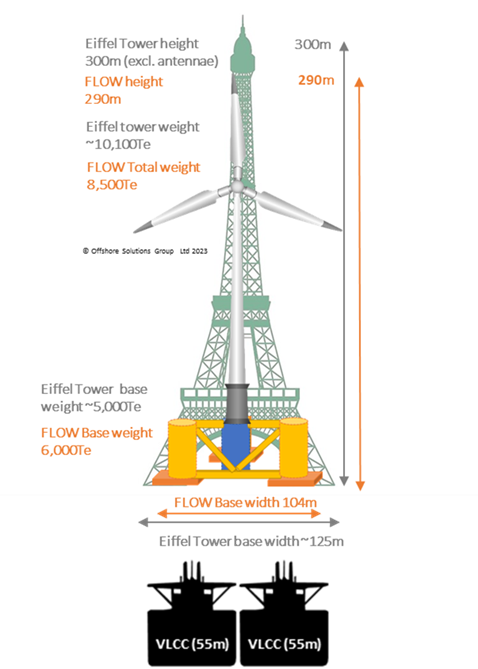
Visual scale representation of a FLOW unit.
The TS-FLOW© JIP is now the world’s largest programme focused on temporary wet storage with a phased scope of work covering site identification, investigation, and operational delivery. Current coverage extends across the entire UK (split between Celtic Sea and UK North) with extensions in coverage to Ireland, France (Atlantic), Baltic and Australia under planning.
The oceans and seas are big, finding offshore parking shouldn’t be a problem? Turns out that finding suitable sites is more challenging when you must take account of the following:
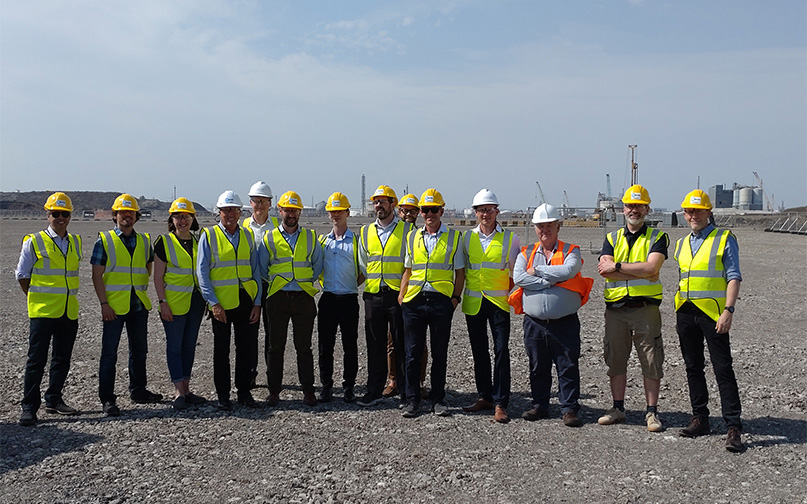
Developers & supply chain partners planning new fabrication facilities.
For the Celtic Sea area, an initial target list of >60 sites yielded only #6 technically & environmentally suitable potential sites and once further investigation is done this may reduce further. Whilst Scotland has sea lochs, larger harbours, and potential anchorages it also has both a greater volume of FLOW projects, many being developed in parallel, and considerable environmental and associated constraints.
The TS-FLOW© JIP, supported by multiple Developers, The Crown Estate and Crown Estate Scotland is providing practical answers to a complex challenge and enabling the promise and potential of floating wind to be realized.
UK FLOW Forward©, building industrial-scale, serial production capability.
The industrial scale serial production of floating units has not been attempted since the liberty ships programme of 1942 and as such the facilities to undertake this activity do not exist today. Conventional shipyards for low volume production and ex-oil & gas fabrication yards do exist and some efforts to repurpose these are underway, but most are either physically constrained or devoid of a supporting infrastructure and resources to deliver volume. This is a global issue and not UK specific.
In response to this challenge OSG leads an industrial consortium, UK FLOW Forward©, who are developing Europe’s largest new serial production facility with the capacity to deliver ~2GW/yr of floating unit modules and complex jacket components. UK FLOW Forward© has combined the unique expertise and experiences of OSG with leading UK fabricator Wilton Group and the global leader in welding services, CRC-Evans Group and is also supported by SeAH Wind.
This major initiative also incorporates the latest process engineering and unique technology solutions around autonomous welding and large component alignment, all to deliver efficient and cost-effective serial production. With over 3 million m2 of new facilities (largest is 450mx100mx50m!) and able to handle modules up to 2,000Te and lengths of ~80m this is an industrial scale project akin to new aircraft manufacturing in its complexity and ambition.
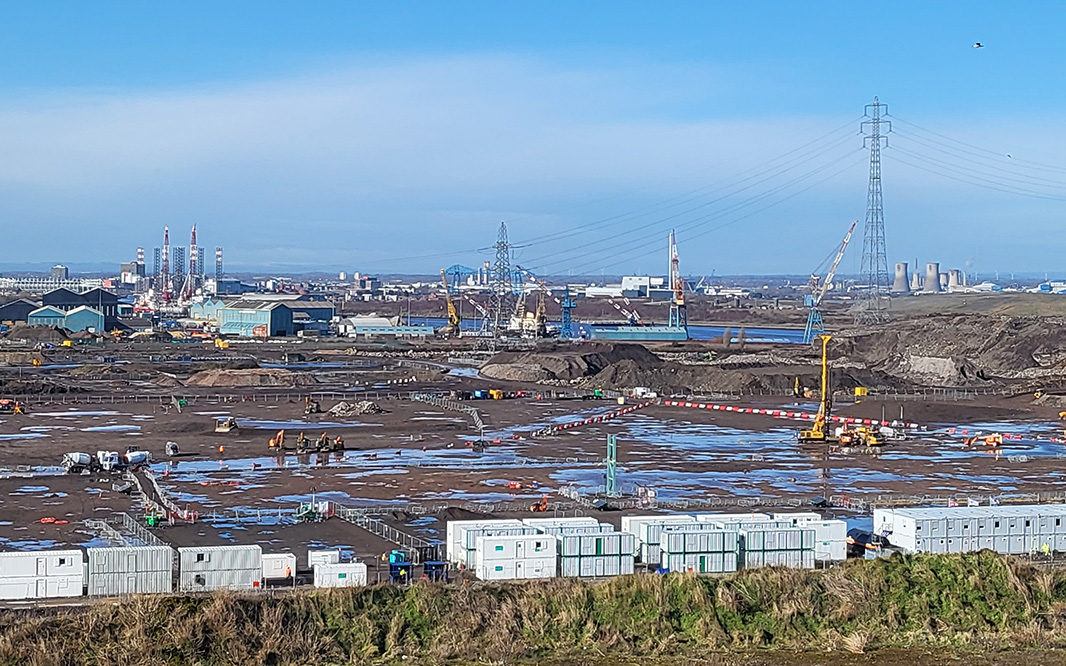
‘Literally’, preparing the ground for new industrial capacity & capability.
By locating these facilities within the industrial heartlands of the North-East of England the initiative draws on local and available resources and an existing supply chain.
A key facet of the UK FLOW Forward© approach is final assembly of the produced modules is completed in Scotland or Wales within a fully integrated multi-site process.
Undertaking final assembly close to deployment locations provides logistical advantages with these giant structures whilst also enabling many more existing ports & facilities to be involved.
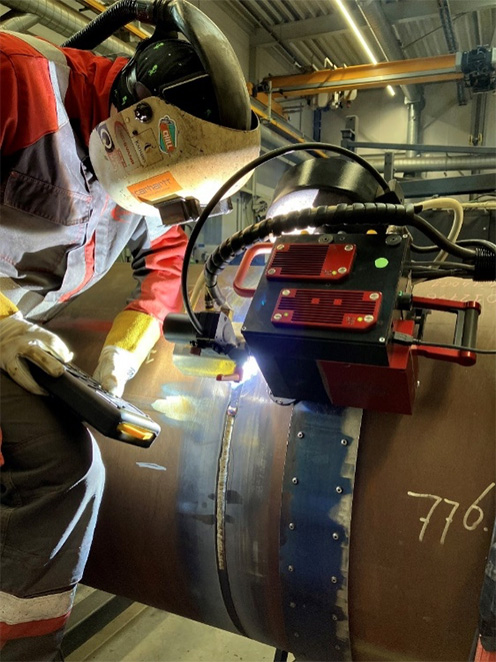
Advanced processes & technology
Splitting final assembly from full module fabrication reduces space, resource and support requirements in final assembly ports and gives greater flexibility and opportunities to manage delivery. This more flexible approach still delivers local jobs and local supply chain opportunities.
Summary
The mergence of floating wind as a new energy source and industrial sector has created excitement and with 25GW of projects, Developers have clearly embraced the potential and acquired the licences. Delivering on this promise requires more than a willing supply chain, needing new thinking to solve practical challenges and innovative approaches to industrial-scale supply.
The TS-FLOW© JIP and the UK FLOW Forward© initiative are two practical examples of how the UK supply chain is rising to this challenge. Using a collaboration of expertise and the application of unique experience, OSG and its various partners are leading the sector in providing practical and deliverable solutions, backed by engineering and technology.
OSG Profile: Offshore Solutions Group (“OSG”) is a floating wind specialist consultancy focused on identifying and then solving some of the major blockers to the delivery of industrial scale (1GW+) floating wind units and their respective mooring & anchoring systems. With a presence across the UK, Europe and in the US, the OSG team comprises industry veterans with extensive operational delivery experience of >100 floating units of all types, globally.











